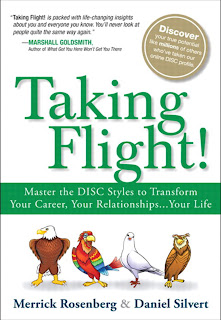The Weekly Activity Report (WAR)
The Weekly Activity Report (WAR) helps align your focus. The idea is to keep your focus on this week's most important things and to be disciplined without being too formal.
The idea is to pick the three most important things you want to accomplish in a quarter. Then break those down to help you focus on what you should be working on this month and this week, so when you are planning each day, you can make sure you are doing something that brings you closer to accomplishing your goals.
WAR Format:
- Top 3 Accomplishments for the past week
- Top 3 items for this week
- Top 3 monthly goals (These may change during the month. It’s important to keep track.)
- Top 3 quarterly goals - propose and then discuss with your manager (Most of these should stay the same during the quarter, but some may change. It is important to track and communicate)
Share your WAR
Sharing your WAR via email or Slack with your manager and your team can be an excellent way to share each other’s successes and be aware of everyone’s priorities. The key is to make sure that what you think is the most important thing aligns with what your manager thinks is the most important thing. You’ll both want to make sure that your WAR aligns with your team’s and company’s goals. Once you are aligned and can see how you impact the bigger picture, it helps drive engagement and inner satisfaction. If you stick to what you said was most important, it enables you to go home on Friday satisfied that you got the most important things done, even though there is more on your to-do list.
Keep it Simple
Keep your WARs simple. I have seen and fallen into the trap of making them too complicated. Its purpose is not to list every task and every call for the week, but to list the three most important things. Ask yourself each week, “If I get nothing else done this week, what are the three most importing things that get me closer to achieving my goals?” If you have more than three, everything becomes important, which means nothing is important. David Allen in Getting Things Done said,
“What you do with your time, what you do with information, and what you do with your body and your focus relative to your priorities—those are the real options to which you must allocate your limited resources… There is always more to do than you can do, and you can only do one thing at a time. The key is to feel as good about what you’re not doing as about what you are doing at that moment.”
Deepen Engagement
In Patrick Lencioni’s Three Signs of a Miserable Job (now renamed to The Truth About Employee Engagement), he says the three things that make work miserable are irrelevance, immeasurability, and anonymity. The WAR can help eliminate irrelevance because you know you are working on the most important things that will make an impact. Having weekly and monthly milestones that you can measure your progress help remove the immeasurability. Communicating your WAR with your manager helps build a deeper relationship, which removes anonymity. Lencioni said:
“great employees don’t want their success to depend on the subjective views or opinions of another human being… Employees who can measure their own progress or contribution are going to develop a greater sense of personal responsibility and engagement than those who cannot. The key to establishing effective measures for a job lies in identifying those areas that an employee can directly influence, and then ensuring that the specific measurements are connected to the person or people they are meant to serve.”
I’ll admit, I haven’t always understood this or the power of setting and sharing your goals. Early in my career, I avoided sharing any status updates thinking if I shared them, I was somehow being micromanaged. Even when I was first introduced to this WAR format by ORIS’s CEO, Pam Springer, I felt it was just busy-work, and it became a homework assignment that I dreaded on Sunday night. Looking back, I appreciate the purpose WARs served and how they helped communicate with each other to make sure we were all rowing in the same direction.
Explain Why
I recently introduced the WAR to the product team at PriceSpider. The first week, I shared mine over email and made it optional for that week. I was so impressed, even though it was voluntary, the whole team submitted them! One team member even created a Slack Workflow, and now we share our WARs in a public Slack channel (#product-team-war) for accountability. I’ll admit, however, I didn’t do the best job explaining the “why” in my first email. After explaining the WAR in our first team meeting, someone thankfully mentioned that they felt they were being micromanaged. I was able to relate and shared how WARs help bring focus and personal satisfaction. That conversation was what drove me to share my thoughts here. If you do roll out WARs to your team, make sure you explain why.





Comments
Post a Comment